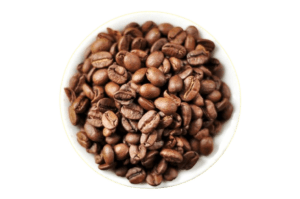TABLE OF CONTENTS
Sometimes the shoulders are the last part of the body we think about when exercising. This might be that we usually consider it has been engaged while we performed our desired routines? Well, while some of the muscles may become active participants at times in our daily routine, performing targeted exercises, that will effect changes where the shoulders are concerned, is absolutely necessary. Targeted exercises will help the shoulders to get sculpted but will work at strengthening and stretching those often forgotten muscles.
The shoulders comprise of eight (8) muscles that are joined to the scapula, humerus and clavicle. The scapula is the main bony structure of the shoulder where all the muscles interact while the humerus is the upper arm bone. The clavicle is what is called the collarbone. All these muscles are the ones that define the outer shape of the shoulders as well as the underarm (Cassidy et al. 2020).
Additionally, there are four (4) main muscles that support the shoulder joints. These muscles are known as the rotator cuff. There are four (4) rotator cuff muscles namely, the supraspinatus, infraspinatus, teres minor and subscapularis. All these muscles help the shoulders with their long-range of motions while helping to shape them as well.
In this article, we will be looking at five (5) exercises that you can perform along with your regular exercise routine that will help to engage these major muscles so as to sculpt and strengthen them, which of course will help to elongate the neck and strengthen the back as well. Let’s discuss!
You can learn more about other targeted exercises as well as how to create a fitness routine here.
- How to create that ‘hiit’ fitness routine
- 5 Best Exercises to tone and strengthen the thighs at home
The Discussion
The shoulder comprises three (3) main bones namely the scapula, clavicle and the humerus. The scapula is the shoulder blade, the bony part of the shoulder where all the muscles interact while the clavicle is the well-known ‘collarbone.’ On the other hand, the humerus is the upper arm bone (https://www.arthritis.org/).
However, with all the muscles intact, the shoulders would not be able to move without these two (2) joints, the acromioclavicular joint and the glenohumeral joint. The acromioclavicular joint is where the scapula (shoulder blade) and clavicle (collarbone) muscles meet. The glenohumeral joint or what is commonly known as the shoulder blade is where a ball (the humeral head) located at the top of the humerus fits into what is called a cuplike shaped socket (glenoid) in the scapula and thus helps with a wide range of motion ((https://www.arthritis.org/). As such, the glenohumeral joint is classically known as the ‘ball and socket’ joint as it is the joint that has the most extensive range of motion in the body (Cassidy et al. 2020).
Other key parts of the structure of the shoulder include the labrum which provides the cartilage to support greater stabilization of the balls of the joints. There is also the deltoid which is that triangular-shaped muscle that covers the glenohumeral joint and what gives the shoulders their round-looking shape. It is also said to be the largest and strongest muscle of the shoulders.
The tendons of the deltoid muscles comprise of three (3) unique sets of muscle fibres, which are often referred to as heads (https://www.fitstep.com/). There are the anterior fibers or what is popularly known as the front deltoids. Secondly, the intermediate fibers, or what is called the lateral or middle deltoids and finally, the posterior or spinal fibers which are commonly referred to as the posterior deltoids.
Additionally, the rotator cuff, which is considered a very critical part of the shoulders, is the group of muscles that connects the humerus to the scapula and helps with the rotation of the arms as well as with stability.
The rotator cuff muscles include the supraspinatus, infraspinatus, teres minor and subscapularis. The supraspinatus is the smallest of the four (4) rotator cuff muscles and helps to stabilize the shoulder joint (https://www.physio-pedia.com/). It is considered to be instrumental in the initiation of shoulder abduction and is consistently engaged prior to any movement of the limbs (Wattanaprakornkul et al. 2011).
The infraspinatus is the part of the rotator cuff muscles that externally rotate the humerus and protect the joint of the shoulder. Additionally, the teres minor primary function is to externally rotate and adduct the arms. Finally, the subscapularis is the largest of the rotator cuff muscles and works in contrast to the teres minor as it internally rotates the arm on the shoulder joint. Together, the rotator cuff muscles work in unison to control the movements of the humeral (shoulder) head and which helps to stabilize it as the shoulder joints and arms moves in different directions.
Important to note, that as you shape and tone the shoulders, you are also activating other muscles of the upper body such as the chest (pectorals), upper back (trapezius) and triceps (arms). As such, the upper body will become tone as well which will help to enhance the physique of the shoulders.
To this extent, this article will discuss five (5) exercises that will not only assist in strengthening the muscles of the shoulders but also shape and tone them as well. These are – Overhead Shoulder Presses (with or without weights), Lateral Raises, Bent-over Lateral Raises, Front Raises and Dumbbell arm/shoulder circles. All these exercises can be performed with bodyweight or with dumbbells.
Five (5) Exercises to Strengthen, tone and Shape the shoulders:
- Overhead Shoulder Press.
- Lateral Raises
- Bent-Over Lateral Raises.
- Front Raises.
- Dumbell Arms/Shoulder Circles.
Overhead Shoulder Press
The overhead shoulder press or simply the shoulder press is a compound movement. As such, it works several muscles of the body, in this case, the upper body in just one move. The overhead shoulder press works the muscles of the deltoids (shoulder), pectorals (chest), triceps (arms) and trapezius (upper back).
If done effectively, overhead shoulder press will strengthen the rotator cuff muscles, which ultimately help to prevent as well as repair shoulder injuries. This type of exercise also strengthens the back of the shoulder as well.
To make this exercise even more effective, try doing this exercise with weights, particularly some dumbbells if you are performing it at home. Please see the instructions in the Illustrative Summary below.
Lateral Raises
Lateral raises work the lateral deltoid muscle, the anterior deltoid (front), the posterior deltoid (back) as well as the supraspinatus, one of the muscles of the rotator cuff. It also works the muscles along the ribs such as the serratus anterior (https://exrx.net/).
Lateral raises when done safely and effectively, is able to strengthen the shoulders and their surrounding muscles. However, if you are going to use weights with this exercise, ensure that the weights are not too heavy, as this will cause wear and tear of the muscles due to being overworked and thus injuries. So, manage your weights carefully.
Also, try not to let your hands raise too high as this can also cause injuries which will defeat the whole purpose of this movement. Please see the instructions in the Illustrative Summary below.
Bent-over Lateral Raises
This exercise is a variation of the lateral raises but performed in a bend motion. As such, it targets other muscles of the deltoid such as the posterior deltoid, which is at the back of the shoulders and the lateral deltoid. It also recruits other muscles of the back, particularly the upper back (trapezius).
Performing bent-over lateral raises can help to strengthen the shoulders as well as increase the health of the shoulders and build muscle mass, which will help to stabilize the body in general. Please see the instructions in the Illustrative Summary below.
Front Raises
This exercise typically targets the anterior deltoid (the front of the shoulders). It also to some extent recruit the lateral or side deltoid as well as the upper and lower back, biceps and upper chest muscles (pectorals). When doing this exercise, ensure that your back is not arched and practice proper breathing such as inhaling as you lift your hands or dumbbells and exhaling as you lower them.
If done properly, front raises are able to strengthen the shoulders as well as provide the shoulders with stability. It will also work at building endurance. Also, to get the most out of this exercise, try performing it with dumbbells, not too heavy though. When using dumbbells, you can mix things up by holding the dumbbells with your palm facing your face or downwards. Both variations help to engage the muscles of the shoulders. Please see the instructions in the Illustrative Summary below.
Dumbbell Arms Circles
This exercise targets the muscles of the shoulders, back (trapezius), pectorals (chest) as well as the muscles of the core. Performing this exercise will help to elongate the shoulder muscles as well as strengthen them. Like with all the other exercises mentioned, ensure that you practice proper breathing as well as keeping the knees slightly bent. Also, ensure that your core is pulled in and your elbows are slightly bent throughout the exercise. Please see the instructions in the Illustrative Summary below.
Illustrative Summary
Here is a summary of the Five(5) Exercises that can Strengthen, Tone and Shape the muscles of the shoulders as well as how to do them!
Let’s Sum Up!
The shoulders are one of those areas of the body that is often overlooked, especially when performing exercises. However, a strong tone and shapely shoulders not only help you to perform other exercises but also help with your overall physique.
While there are many exercises or variations that can help to strengthen the shoulders, this post just explored five (5) that can greatly target all the muscles of the shoulders, primarily the rotary cuff muscles which are instrumental for strong and sculpted shoulders. These include the overhead shoulder press, lateral raises, bent-over lateral press, front raises as well as dumbbell arms or shoulder circles.
Performing one or two of these movements with your regular routine or on your upper body days will certainly help you on your fitness quest of achieving a well-sculpted, tone and most importantly, stronger shoulders. So, Get your fit on!
To further help you on your fitness journey, why not check out these other posts:
References
- American Council on Exercise: Dumbbell Front Raise
- Journal of Clinical Medicine Research: “Functions of the Triceps Brachii in Humans: A Review”
- McCausland C, Sawyer E, Eovaldi BJ, et al. Anatomy, Shoulder and Upper Limb, Shoulder Muscles. [Updated 2020 Aug 10]. In: StatPearls [Internet]. Treasure Island (FL): StatPearls Publishing; 2020 Jan-. Available from: https://www.ncbi.nlm.nih.gov/books/NBK534836/
- Wattanaprakornkul D, Halaki M, Boettcher C, Cathers I, Ginn KA. A comprehensive analysis of muscle recruitment patterns during shoulder flexion: an electromyographic study. Clin Anat. 2011;24(5):619-626. doi:10.1002/ca.21123.




